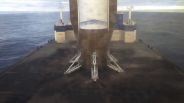Archives
-
Pediatricians Recommend Raising Minimum Age For Tobacco, E-cig Sales To 21
-
Maryland To Require Testing Of All 1- And 2-Year Olds For Lead
-
Damaged Tissues, Organs Could Soon Be Replaced By 3D-Printed Substitutes
-
US Task Force Urges All Overweight Adults To Get Screened For Type 2 Diabetes
-
Study Reveals Only About 4 Percent Of Ocean Is Protected
-
Microsoft Surface Pro 4 And Surface Book Launch Today, But Some High-End Versions Not Available: Here’s Where To Buy
-
Walmart Wants To Be Like Amazon, Asks Gov't For Permission To Test Drone Deliveries
-
Classic NES Game ‘Wonderland Dizzy’ Thought Lost For 22 Years Released For Free
-
Study Reveals Earthquakes Can Alter Elastic Properties Of Earth Crust
-
Sony Could Bring PlayStation 1 And 2 Classics To The PlayStation 4, ID Change For PlayStation Network
-
Apple App Store To Feature E-Commerce Apps In New Shopping Category Ahead Of Black Friday
-
Android 6.0 Marshmallow Google Now On Tap: How To Enable Or Disable The Feature
Most Popular




